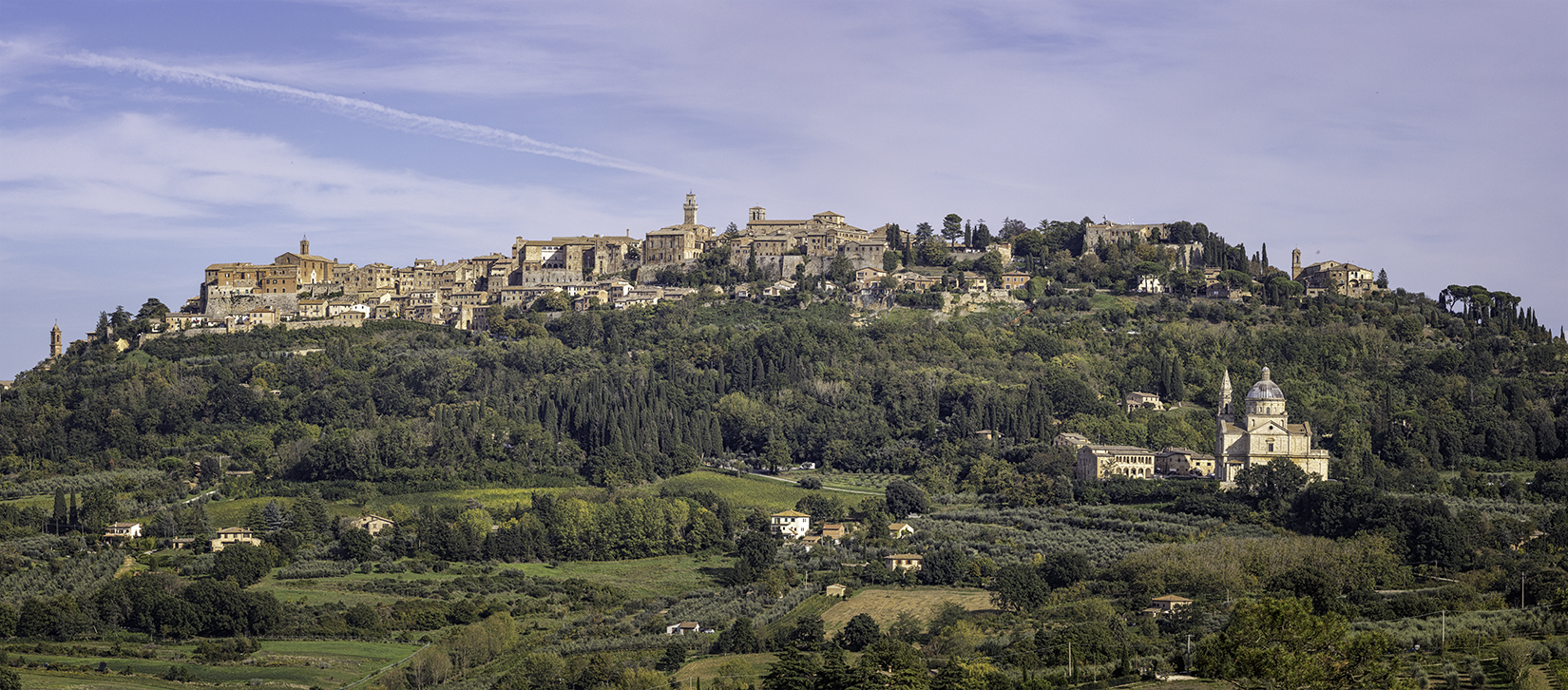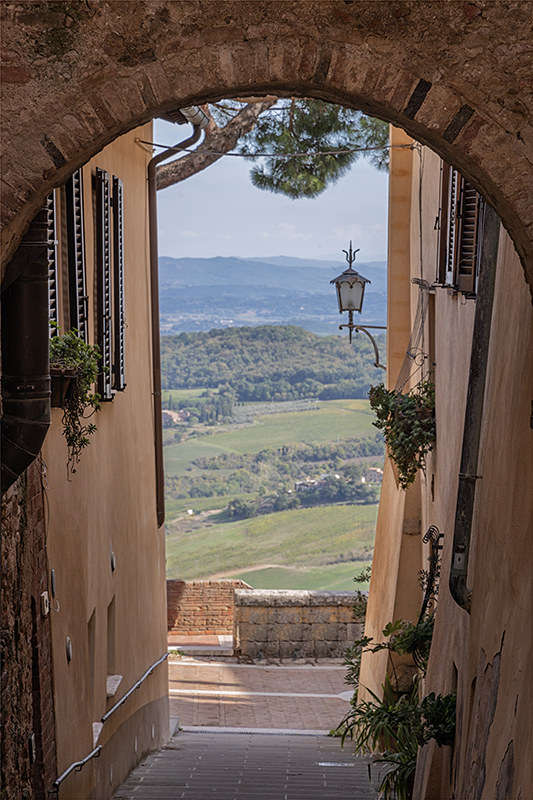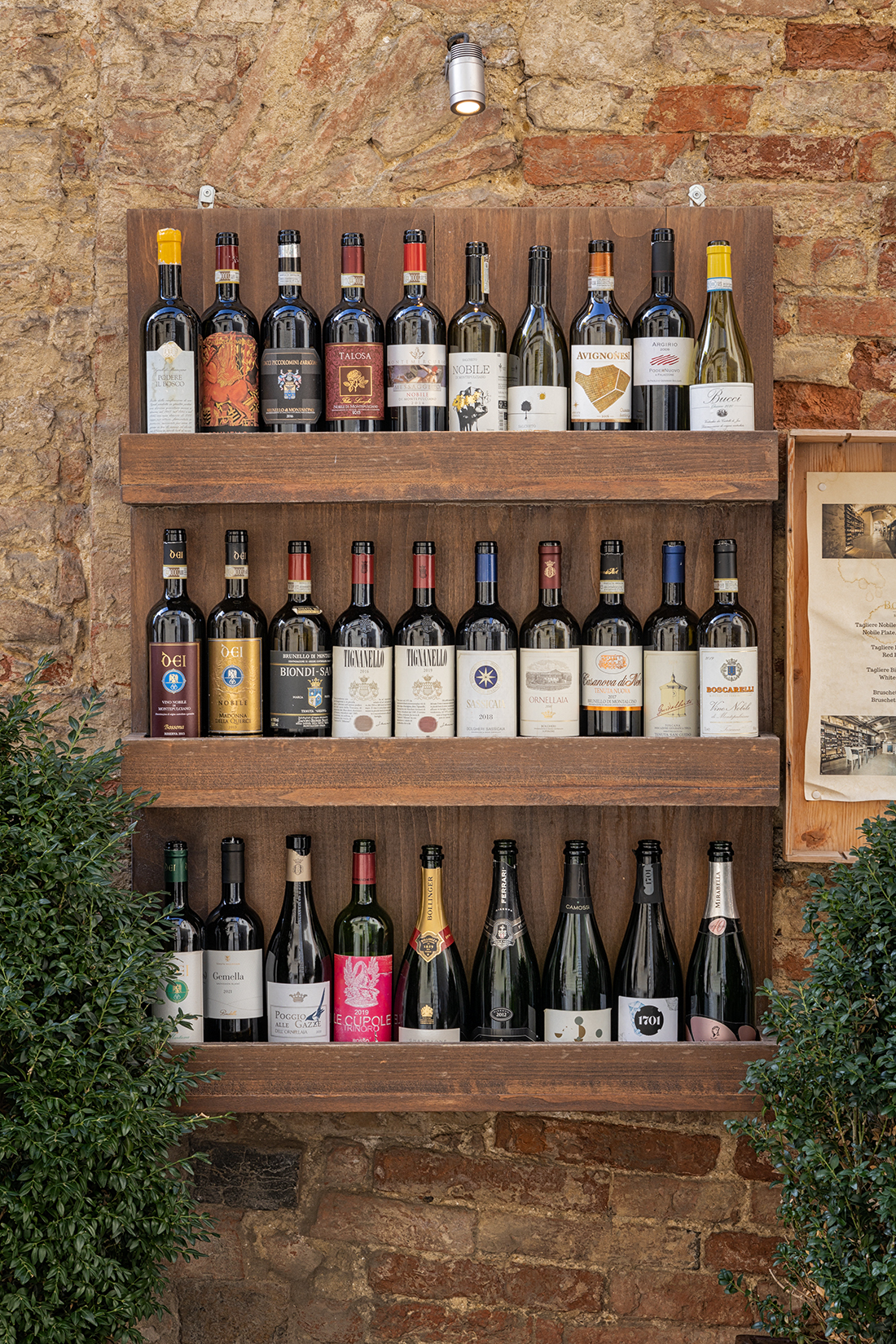Whilst not technically in Val D’Orcia, Montepulciano is the largest town in the immediate surrounding area. As with many towns in Tuscany it is built on a hill, in this case a 605m high limestone ridge. The origins of the town pre-date even the Romans, having been founded in Etruscan times, then later developed into a Roman garrison. For much of the middle ages it was under the control of Florence, holding a strategic position in the long rivalry with Sienna, but gradually lost its importance after the 17th century. However it remains a significant wine producer, with Vino Nobile de Montepulciano being one of the main wines of Tuscany. (This should not be confused with Montepulciano d’Abruzzo which is produced in eastern Italy). Toursim is also important to the town and many of the central streets are mainly car free, allowing tourists to explore the narrow streets that wind upwards towards the Piazza Grande.
The main square at the top of the town is the Piazza Grande which is surrounded by the town hall, cathedral and several palaces. The town hall or Palazzo Comunale was designed by Michelozzo in the mid 15th Century. Michelozzo was one of the most eminent Florentine architects of the century and had contributed towards the Pallazzo Della Signoria in Florence, and his design for the Palazzo Comunale is very reminiscent of building in Florence. On the right side of the Piazza are the Pozzo dei Griffo e dei Leoni – the Well of the Griffins and Lions, and the Palazzo Nobili-Tarugi shown in the image below. This image is a wide stitched panorama which required extensive editing to correct the perspectives.
The Well of Griffons and Lions is tucked behind the Palazzo Nobili-Tarugi in the image above, but here is the design at the top of the well. It was designed by Antonio Da Sangallo in the late 15th century and features the arms of the Medici family between the two lions.
On the left side of the piazza in the image above is the Cathedral Saint Mary of the Assumption. At the time of our visit this was covered in scaffolding and was closed for renovation, hence no photographs. However we were able to visit the Chiesa del Gesu – the Church of Jesus, built during the 1700s in the Baroque style. This is located further downhill to the east of the Piazza Grande.
One landmark to look out for is the Pulcinella Clock Tower. Pulcinella is a popular figure in traditional Italian theatre, probably originating in Naples – a bit of a social climber, always looking to climb above his status, but unwilling to work for it. How this character came to strike the time for Montepulciano is unclear. The clock tower dates to 1524 , but the figure of Pulcinello probably replaced the original bell ringer some time in the 17th century.
Given its location on a hill, there are occasional glimpses out over the surrounding country side from the medieval streets.
Montepulciano is very much a wine town, and all over the town there are restaurants and wine sellers, many with bottles on display in the street to advertise their wares. As the town is built on a hill, many of the buildings are dug back into the hillside, giving a cave-like appearance to the interiors.








